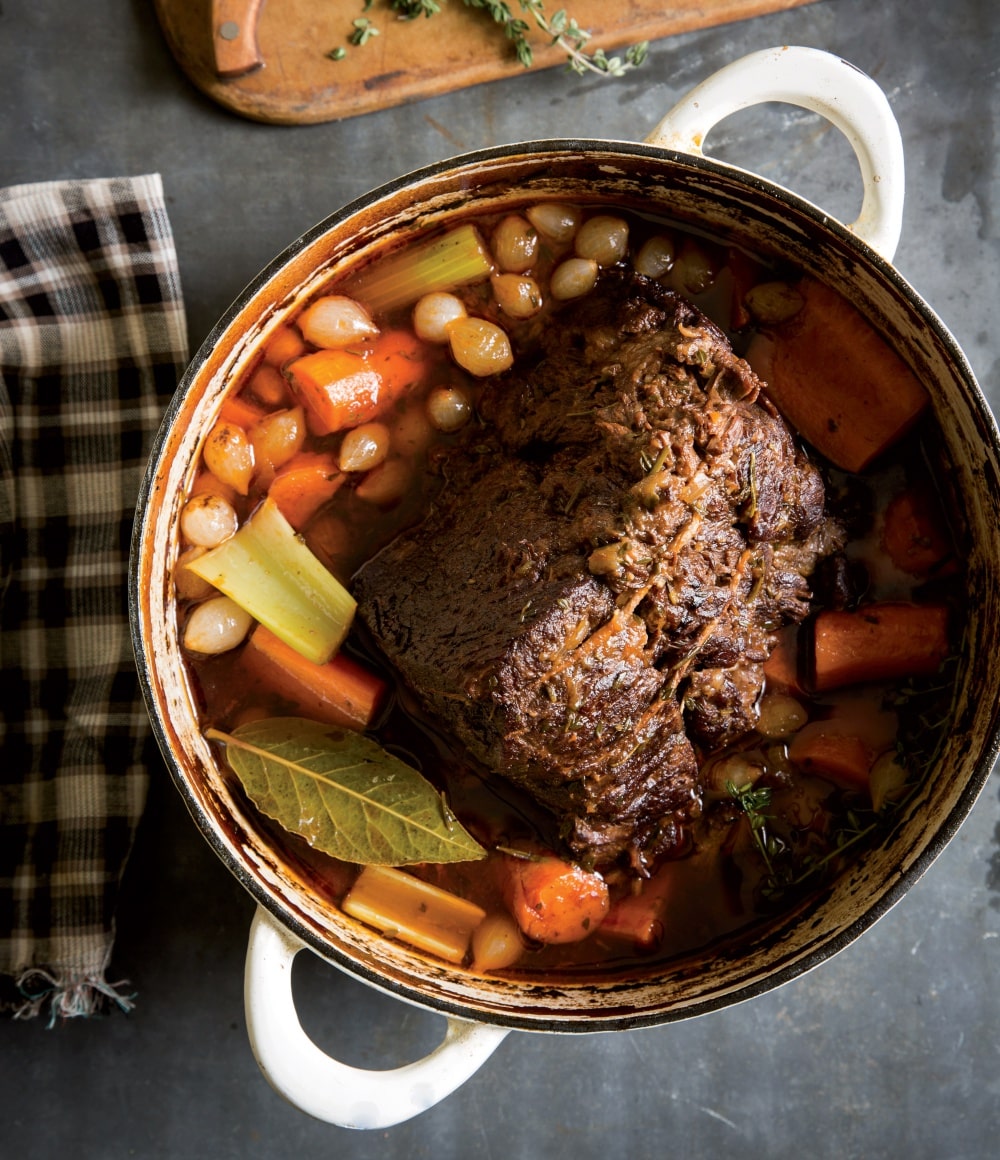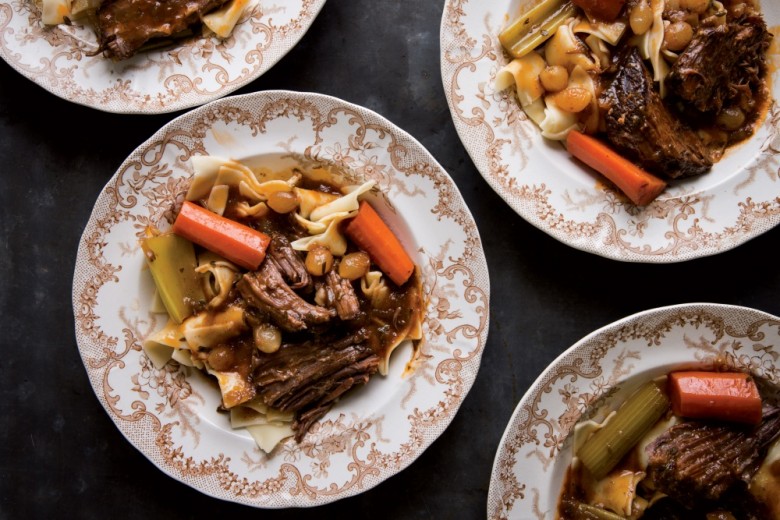Yankee Pot Roast | Recipe With A History
This classic Yankee pot roast recipe isn’t just delicious, it’s the essence of the New England kitchen. Learn more about the dish’s history.

Yankee Pot Roast is hearty New England fare.
Photo Credit : Keller + KellerThumb through any New England cookbook from the last hundred years and you’ll be hard pressed to find one without an entry for savory Yankee pot roast. As essential to winter survival here as snow tires and a good pair of slippers, this classic combination of tender beef, seasoned vegetables, and rich sauce is comfort food at its best, earning it a spot on menus and dinner tables across America.
“Pot roast,” as a term for browned meat cooked with vegetables in a covered pot, began appearing in cookbooks in the late 19th century, but this method of slow cooking in liquid, known as braising, is centuries older. Tough cuts, such as beef chuck, short ribs, and brisket, lamb shanks, and pork shoulder, are braising favorites because they’re rich in marbled fat and connective tissue, which converts to gelatin over long, gentle cooking times to produce both tender meat and a silken sauce. Coming from the more heavily “worked” parts of the animal, they have more flavor, so a good braise gives you delicious meat cooked down to pull-apart perfection.
The process usually begins with searing the meat. This step doesn’t hold moisture in, as cooks once believed, but it does create wonderful flavor. In his memoir/cookbook Grandma’s Cooking (Gramercy Publishing, 1955), journalist Allan Keller reflected on boyhood memories of his Connecticut grandmother’s Yankee pot roast, noting that she began by browning the meat in a piece of suet “the size of a large coffee cup,” complimentary from the local butcher.

Photo Credit : Keller + Keller
Once the meat is browned, pot roast is simmered in a mixture of stock and tomatoes, seasoned with sautéed onion and herbs. Then, during the final hour, the cook adds his or her choice of vegetables for the final, tantalizing hour. Onions, carrots, parsnips, turnips, celery, potatoes—any can be used. As the good bit of Yankee kitchen wisdom says, “Whatever’s on hand is what works best.” Out of the oven, the meat is fork-tender, the sauce rich and flavorful, and the leftovers (if there are any) ready for reincarnation in sandwiches, hash, pastas, and savory pies.
Whether the “Yankee” in Yankee pot roast is a nod to the dish’s American regional origins or (as some suggest) a joke about New England frugality, a good Yankee pot roast embodies the traditions of simplicity and patience rewarded. “Like any great masterpiece, a Yankee pudding, pie, or roast is not dashed off in a trice,” Keller warned. “But when the lid is lifted and the aromas drift through the kitchen, it is like the spring that follows a hard, cold winter.” We couldn’t agree more.
This post was first published in 2014 and has been updated.
GET THE RECIPES:
Classic Yankee Pot Roast
Quick Beef Gravy
Aimee Tucker
Aimee Tucker is Yankee Magazine’s Home Editor and the Senior Digital Editor of NewEngland.com. A lifelong New Englander and Yankee contributor since 2010, Aimee has written columns devoted to history, foliage, retro food, and architecture, and regularly shares her experiences in New England travel, home, and gardening. Her most memorable Yankee experiences to date include meeting Stephen King, singing along to a James Taylor Fourth of July concert at Tanglewood, and taking to the skies in the Hood blimp for an open-air tour of the Massachusetts coastline.
More by Aimee Tucker

